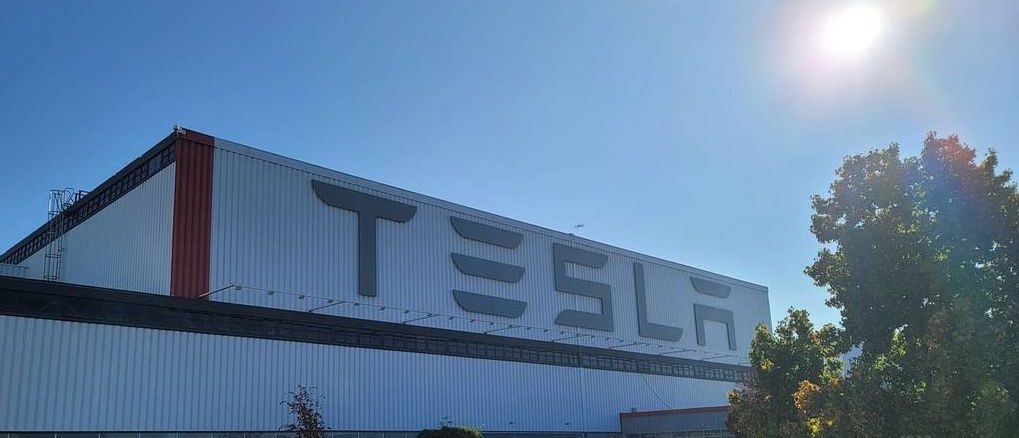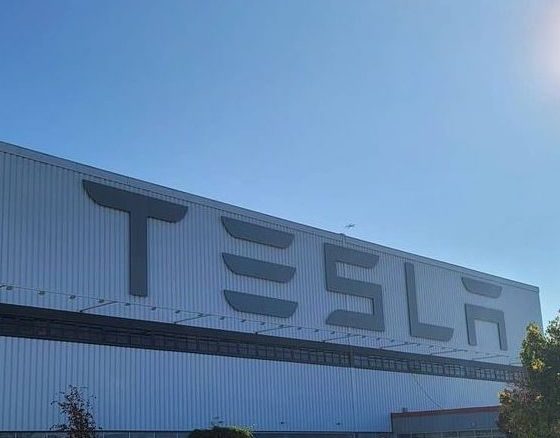

News
Tesla FSD’s prolonged release doesn’t make it a ‘fraud,’ company says
Tesla Full Self-Driving’s prolonged release doesn’t make it a “fraud,” the company said in a motion to dismiss a case.
Tesla is currently involved in a class-action lawsuit from a few Autopilot and Full Self-Driving customers and has recently filed a motion to dismiss the case with the U.S. District Court in San Francisco. In that motion, a statement was made by Tesla’s attorneys that may have been taken out of context by some media reports.
Teslarati obtained a copy of the motion, and here is what we found.
After some background information on FSD, Tesla noted that each of the plaintiffs purchased a vehicle, and “all but one allegedly purchase the FSDC package.” (FSDC is an acronym for full self-driving capability.)
“Plaintiffs knew at the time of purchase that their cars were not completely autonomous. And they knew that the timeline towards more complete autonomy was contingent upon numerous factors, including software development and regulatory approval. Yet now they sue Tesla, complaining that their cars are not completely autonomous.”
The document noted that four out of five of the named plaintiffs have valid arbitration agreements with Tesla that should be enforced and cover all of their claims. The one plaintiff who opted out “advanced a consolidated complaint riddled with defects, and that should be dismissed.”
The plaintiff “sued too late–five years after he purchased his vehicle and the optional software package, well after any of his claims accrued. All of his claims are time-barred and should be dismissed. Moreover, the hundreds-of-paragraph, narrative complaint fails to support a single cognizable legal theory. The Complaint makes no mention of the parties’ written contract or Tesla’s car warranty. It instead cherry-picks numerous statements allegedly made by Tesla and attempts to manufacture claims for fraud and breach of warranty.”
Tesla’s attorneys made several statements, including that headline-worthy one regarding FSD and failure. However, the attorneys never claimed that FSD is a failure. In the document, the attorneys pointed out that the complaint “identifies no statement that Tesla made that was fraudulent.”
Additionally, it added that no there was no statement made that Tesla’s vehicles, including those equipped with the FSDC package, were fully autonomous at the time of the Plaintiff’s purchase. Tesla’s website also made it very clear that those vehicles were not.
Tesla’s attorneys noted that the plaintiff allegedly researched Tesla’s online and public statements and reviewed them before buying his vehicles. The labels of “Autopilot,” “Enhanced Autopilot,” or “Full Self-Driving Capability” didn’t mean that the vehicles were fully autonomous. Tesla’s attorneys also noted that Tesla’s user manuals plainly showed this as well.
“Nor would any reasonable consumer purchase a Tesla vehicle with the belief that it is fully autonomous based solely on these labels,” the attorneys said.
Instead, each of the plaintiffs alleged that they “decided to purchase [his or her] vehicle and the ADAS packages after researching, reviewing, and relying on Tesla’s online and other public statements.”
The plaintiff’s “assertion that Tesla promised the vehicles were already fully autonomous when they were sold rings hollow,” the attorneys stated.
“His assertion that Tesla promised to release completely autonomous capabilities ‘within a reasonable time after,’ his purchase fares no better.”
“No allegations show that Tesla promised that the FSDC package would enable full autonomy within a specified period of time. Many of the statements quoted in the Complaint did not even concern the FSDC package,” the attorneys said, adding that this makes it irrelevant to the plaintiff’s claims.
“In addition, the quoted statements were also often accompanied by and subject to the qualifier that a release of fully autonomous capabilities to the general public would require government approval, a variable over which Tesla had no control, and that any regulatory clearance would require a vast amount of data to show that completely autonomous driving is significantly safer than human driving.”
The attorneys cited another federal court that said similar statements “do not constitute fraud” because they indicate that Tesla wasn’t making the absolute representation the Plaintiff said he was.
“Same here. Especially under the heightened Rule 9(b) standard, no allegation suggests that the aspirational statements that Tesla did make were, somehow, false when made. See Richardson, 2000 WL.”
“To the contrary, allegations in the Complaint demonstrate that Tesla has been constantly improving its ADAS technology by releasing software updates, with a goal of achieving more and better autonomy capabilities in the future.”
“Mere failure to realize a long-term, aspirational goal is not fraud.“
In reference to the above statement, the attorneys pointed out that the courts often rejected the argument that a plaintiff can prove the fraudulent intent by pointing to Tesla’s “subsequent failure to perform under the agreement.”
Since launching the software in 2015, Tesla has made a lot of progress toward FSD and autonomous. Tesla has had two AI Day events explaining the technology being developed and used. And Tesla has since launched an FSD Beta testing program, and you can read the recent Tesla FSD Beta news here.
Disclosure: Johnna is a $TSLA shareholder and believes in Tesla’s mission.
Your feedback is welcome. If you have any comments or concerns or see a typo, you can email me at johnna@teslarati.com. You can also reach me on Twitter at @JohnnaCrider1.
Teslarati is now on TikTok. Follow us for interactive news & more. Teslarati is now on TikTok. Follow us for interactive news & more. You can also follow Teslarati on LinkedIn, Twitter, Instagram, and Facebook.

Elon Musk
Starlink achieves major milestones in 2025 progress report
Starlink wrapped up 2025 with impressive growth, adding more than 4.6 million new active customers and expanding service to 35 additional countries, territories, and markets.

Starlink wrapped up 2025 with impressive growth, adding more than 4.6 million new active customers and expanding service to 35 additional countries, territories, and markets. The company also completed deployment of its first-generation Direct to Cell constellation, launching over 650 satellites in just 18 months to enable cellular connectivity.
SpaceX highlighted Starlink’s impressive 2025 progress in an extensive report.
Key achievements from Starlink’s 2025 Progress
Starlink connected over 4.6 million new customers with high-speed internet while bringing service to 35 more regions worldwide in 2025. Starlink is now connecting 9.2 million people worldwide. The service achieved this just weeks after hitting its 8 million customer milestone.
Starlink is now available in 155 markets, including areas that are unreachable by traditional ISPs. As per SpaceX, Starlink has also provided over 21 million airline passengers and 20 million cruise passengers with reliable high-speed internet connectivity during their travels.
Starlink Direct to Cell
Starlink’s Direct to Cell constellation, more than 650 satellites strong, has already connected over 12 million people at least once, marking a breakthrough in global mobile coverage.
Starlink Direct to Cell is currently rolled out to 22 countries and 6 continents, with over 6 million monthly customers. Starlink Direct to Cell also has 27 MNO partners to date.
“This year, SpaceX completed deployment of the first generation of the Starlink Direct to Cell constellation, with more than 650 satellites launched to low-Earth orbit in just 18 months. Starlink Direct to Cell has connected more than 12 million people, and counting, at least once, providing life-saving connectivity when people need it most,” SpaceX wrote.
News
Tesla Giga Nevada celebrates production of 6 millionth drive unit
To celebrate the milestone, the Giga Nevada team gathered for a celebratory group photo.

Tesla’s Giga Nevada has reached an impressive milestone, producing its 6 millionth drive unit as 2925 came to a close.
To celebrate the milestone, the Giga Nevada team gathered for a celebratory group photo.
6 million drive units
The achievement was shared by the official Tesla Manufacturing account on social media platform X. “Congratulations to the Giga Nevada team for producing their 6 millionth Drive Unit!” Tesla wrote.
The photo showed numerous factory workers assembled on the production floor, proudly holding golden balloons that spelled out “6000000″ in front of drive unit assembly stations. Elon Musk gave credit to the Giga Nevada team, writing, “Congrats on 6M drive units!” in a post on X.
Giga Nevada’s essential role
Giga Nevada produces drive units, battery packs, and energy products. The facility has been a cornerstone of Tesla’s scaling since opening, and it was the crucial facility that ultimately enabled Tesla to ramp the Model 3 and Model Y. Even today, it serves as Tesla’s core hub for battery and drivetrain components for vehicles that are produced in the United States.
Giga Nevada is expected to support Tesla’s ambitious 2026 targets, including the launch of vehicles like the Tesla Semi and the Cybercab. Tesla will have a very busy 2026, and based on Giga Nevada’s activities so far, it appears that the facility will be equally busy as well.
News
Tesla Supercharger network delivers record 6.7 TWh in 2025
The network now exceeds 75,000 stalls globally, and it supports even non-Tesla vehicles across several key markets.

Tesla’s Supercharger Network had its biggest year ever in 2025, delivering a record 6.7 TWh of electricity to vehicles worldwide.
To celebrate its busy year, the official @TeslaCharging account shared an infographic showing the Supercharger Network’s growth from near-zero in 2012 to this year’s impressive milestone.
Record 6.7 TWh delivered in 2025
The bar chart shows steady Supercharger energy delivery increases since 2012. Based on the graphic, the Supercharger Network started small in the mid-2010s and accelerated sharply after 2019, when the Model 3 was going mainstream.
Each year from 2020 onward showed significantly more energy delivery, with 2025’s four quarters combining for the highest total yet at 6.7 TWh.
This energy powered millions of charging sessions across Tesla’s growing fleet of vehicles worldwide. The network now exceeds 75,000 stalls globally, and it supports even non-Tesla vehicles across several key markets. This makes the Supercharger Network loved not just by Tesla owners but EV drivers as a whole.
Resilience after Supercharger team changes
2025’s record energy delivery comes despite earlier 2024 layoffs on the Supercharger team, which sparked concerns about the system’s expansion pace. Max de Zegher, Tesla Director of Charging North America, also highlighted that “Outside China, Superchargers delivered more energy than all other fast chargers combined.”
Longtime Tesla owner and FSD tester Whole Mars Catalog noted the achievement as proof of continued momentum post-layoffs. At the time of the Supercharger team’s layoffs in 2024, numerous critics were claiming that Elon Musk was halting the network’s expansion altogether, and that the team only remained because the adults in the room convinced the juvenile CEO to relent.
Such a scenario, at least based on the graphic posted by the Tesla Charging team on X, seems highly implausible.








